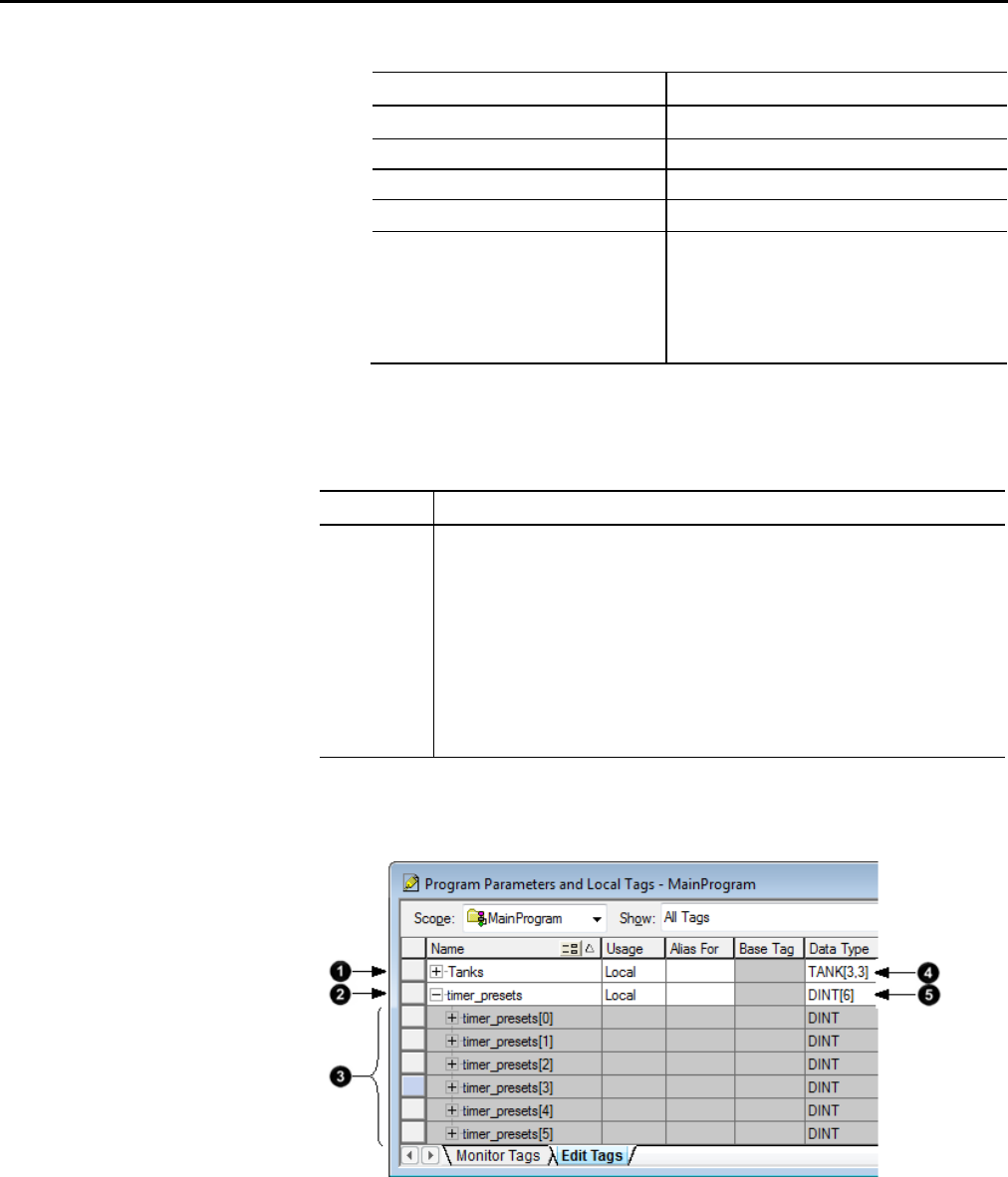User Manual
Table Of Contents
- Logix5000 Controllers I/O and Tag Data
- Summary of changes
- Table of contents
- Preface
- Communicate with I/O modules
- Organize tags
- Force I/O
- Data access control
- Introduction
- External access
- Configure external access
- External access availability
- User-defined type considerations
- Add-on instructions external access considerations
- Tag mapping considerations
- Imported tag behavior
- Constant value tags
- Configure constant tags
- Constant check box availability
- Add-on instructions constant value considerations
- Index

Chapter 2 Organize tags
Data Type Range
DINT -2,147,483,648...2,147, 483,647
INT -32,768...32,767
LINT 0...32535129599999999
SINT -128...127
REAL -3.402823E38 to -1.1754944E-38 (negative values)
and
0
and
1.1754944E-38 to 3.402823E38 (positive values)
Logix5000 controllers also let you use arrays to organize data.
Term Definition
Array A tag that contains a block of multiple pieces of data.
• An array is similar to a file.
• Within an array, each individual piece of data is called an element.
• Each element uses the same data type.
• An array tag occupies a contiguous block of memory in the controller, each element in sequence.
• You can use array and sequencer instructions to manipulate or index through the elements of an
array.
• You organize the data into a block of one, two, or three dimensions.
The subscript identifies each individual element within the array. A subscript
starts at 0 and extends to the number of elements minus 1 (zero based).
Create an array
34 Rockwell Automation Publication 1756-PM004E-EN-P - October 2014










